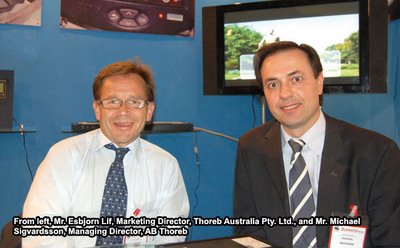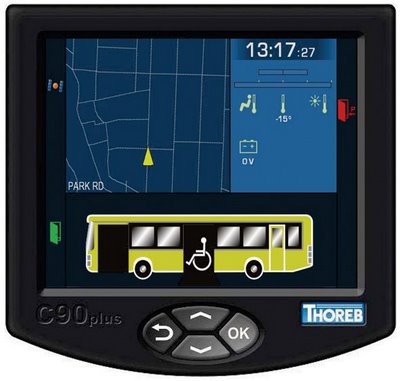
Castmaster India Private Ltd. has signed a JV with Thoreb, a Swedish company for bus fleet management systems. The newly-formed company is known as Castmaster Thoreb India Pvt. Ltd. Globally, Thoreb focuses on innovative solutions for public transport. Its main business areas are real-time information system and intelligent electrical systems. Its product line includes IT systems specifically designed for the public transport industry.
Thoreb also provides intelligent multiplexing method for buses that places I/O control nodes in key areas of the bus. Not only will these nodes provide precise intelligent control of all devices on the bus, they can also collect data from sensors and other sub-systems on a bus in real-time. It has an on-board computer which will transmit the information to fleet operators using the GPS system.
This computer will provide vital information which will help in periodic maintenance of the fleet and suggest areas for improvement. This will help corporations in optimising their cost and improving efficiency.
ELSY Multiplex
Multiplex technology was first introduced into the bus industry in the late 1980s. AB Thoreb was probably the first company that started research and development in multiplex electrical systems for buses.
After a couple of years of research the first prototype bus with ELSY multiplex was produced in 1986. Research continued as well as development of suitable components during the rest of the 1980s.
About 1990, AB Thoreb was ready to make the first field test. The test was performed on eight buses of which four were equipped with ELSY multiplex and the other four buses with a conventional electrical system. The field test was sponsored and supervised by the Swedish traffic authorities, then known as KTB. The eight buses were operated by Stockholms Lokaltrafik (SL), a major bus operator in Stockholm. At that time operating about 3,000 buses, SL was a community-owned bus operator. The buses undergoing tests were placed at the same bus depot and performed operations on the same routes, so that a comparison between the ELSY system and the conventional system could be made.
The eight buses were operated by Stockholms Lokaltrafik (SL), a major bus operator in Stockholm. At that time operating about 3,000 buses, SL was a community-owned bus operator. The buses undergoing tests were placed at the same bus depot and performed operations on the same routes, so that a comparison between the ELSY system and the conventional system could be made.
About a year after the field test had started an evaluation was made. The results were better than expected. Actually the number of faults in the electrical system had decreased by 50 per cent compared with the conventional type of electrical system.
With this AB Thoreb decided to industrialize and start marketing the new technology. After a couple of years the market demand for the new and better technology increased, and AB Thoreb started to supply ELSY to many bus builders in Europe, including Volvo and Scania.
Today Multiplex technology is a standard technology and is used amongst the majority of the world’s bus builders. Thoreb has clients in Europe, Russia, South America, Australia, The Middle East, Asia and the US.
Prototypes with the ELSY multiplex technology has also been installed with a few KSRTC buses in Bangalore.
Advantages
There are advantages with the multiplex technology for both the bus builder and bus operator. To make savings is much up to the bus builders’ desire for and needs of changes and the existing efficiency. The normal time saving possibilities are in between 70-120 hours per produced bus. Time savings are distributed on different areas of the production of the bus. Time savings are found in the construction and electrical design department, in the production itself including end of line test and diagnostics as well as in the area of warranty and after sales and service.
The multiplex technology has become a standard in modern buses. The evolution of public transportation and the continuous increase in functionality has made multiplex indispensable for the bus industry. Building complex electrical systems with old-fashioned conventional solutions has become impossible because of the complexity in present-day buses.